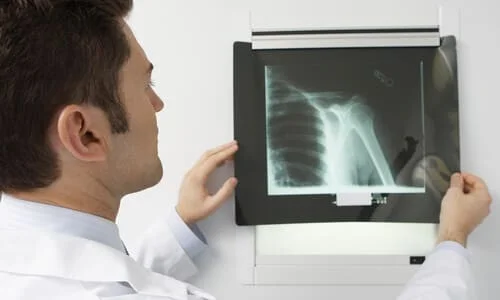Call 24/7 801-810-9999
Book a Consultation
Find out why so many clients appreciate the amount of work we put into their case.
"*" indicates required fields
 Depending on how bad a car accident is, as well as where you were when it occurred, the injuries you sustain will vary. For example, drivers might be expected to experience contusions or concussions from a collision, while pedestrians are more inclined to experience road rash.
Depending on how bad a car accident is, as well as where you were when it occurred, the injuries you sustain will vary. For example, drivers might be expected to experience contusions or concussions from a collision, while pedestrians are more inclined to experience road rash.
But injuries are injuries. No matter what kind they are, they always are a source of pain – certainly discomfort at the very least – and problems for those who deal with them.
Let’s talk about common car accident injuries, what causes them, and how they can affect you in the long term.
Just about every injury you can sustain from a car accident has the potential to become a long-term problem. The probability of this happening depends on what the injury is and the medical attention you receive for it.
Some long-term injuries are more common and/or more serious than others. Here are a few of them.
Chronic pain is often tied to tissue damage, scarring, or both. Pain in the neck, shoulders, and back are some of the most frequently encountered forms of chronic pain and are usually caused by whiplash from rear-end accidents.
Scars are most often associated with the skin and are thought of as a superficial or cosmetic problem. While this can be the case, scar tissue can form on damaged muscle tissue, potentially leading to chronic pain under certain conditions, such as cold weather.
Chronic pain can also be caused by damage to the skeleton, particularly to the limbs, joints, or spine. Pain caused by damaged muscle and bone tissue is called musculoskeletal pain and can worsen without proper rehabilitation of the injury.
Treating musculoskeletal pain is typically done with physical therapy, which varies in cost but can reach several thousand dollars in total.
The most frequent reason for amputation is trauma, which accounts for nearly half of all amputations per year. They may also be the result of complications stemming from other injuries or the treatment of other injuries.
Amputees often have to give up a significant portion of their quality of life in order to adapt to their new disability. And, unlike most other long-term injuries, which have some chance of healing and recovery, no matter how small, amputees have none.
Amputees also have to deal with unique problems only they will face, including adapting to new functional limitations and phenomena such as phantom limbs and phantom pain.
Neurons do not regenerate, unlike most of the other cells in our body. So when nerves receive damage, it’s up to the remaining healthy nerves to pick up the dead one’s slack.
It also means sufficient damage to the nerves can lead to complete and permanent loss of function in some parts of the body. Some people might experience a lack of bowel control, some might have chronic spasms in a limb, and the most unfortunate will experience paralysis.
Brain damage is a potential long-term effect of concussions, and nerve damage can happen as a complication of burns or blunt-force trauma, specifically in the spine.
Therapy can help individuals with nerve damage get some function back, but the operant word here is some. Complete healing is rare.
Plenty of specific injuries occur in car accidents, and they vary with each accident that occurs. Thankfully, we can simplify things by classifying car accident injuries into different groups.
Most car accident cases involve two of these groups, namely, impact injuries and penetrating injuries. However, these are not the only injuries people experience, and while common, they are certainly not the most common.
A third category of injuries that is seldom discussed is that of indirect injuries. This lack of discussion is ironic considering whiplash, one of the most common injuries sustained in vehicular accidents, is an indirect injury.
Finally, there are also burn injuries. These occur less frequently than other physical trauma on the list but are frequent enough to be a problem among pedestrians and motorcyclists involved in car accidents.
Impact injuries – known in medicine as blunt trauma or blunt-force trauma – result from impact with a blunt, solid surface. In car accidents, this means the force of the car crash either drove a part of a person’s body into a surface or vice versa.
For drivers, this usually means the head striking the steering wheel or instrument panel. People in the passenger seat, on the other hand, will usually strike the dashboard.
Victims in both the front seats are also at risk of impact with the windshield and side windows, though these accidents are less common due to both the presence of functioning airbags and the proper use of seatbelts in modern vehicles.
Accident victims in the back seats will usually receive impact injuries from either the side windows or the rear of the front seats. People outside the vehicle can receive impact injuries either from contact with the vehicle itself or from falling or being pushed against other surfaces.
Blunt force damage comes in four different types:
Fractures exclusively affect bone tissue, while contusions, abrasions, and lacerations can affect internal organs, though they most often occur on the skin. Also unique to fractures is that they can be classified as indirect as opposed to direct injuries, which most blunt-force trauma is.
Penetrating trauma, in contrast to blunt-force trauma, includes any injury where a sharp object – as the name suggests – penetrates the tissue. This means whatever the external force is, it must have overcome the strength of the tissue sufficiently to enter it.
Interestingly enough, there is no universal line between sharpness and dullness. For example, the curved edge of a side window panel might be considered dull, but when the window shatters, shards can fly with enough speed to enter the body, even with the blunt edge leading.
In this scenario, the blunt edge was considered sharp enough to penetrate the skin. For the purpose of classification, therefore, medical professionals consider a penetrating injury as one where an object made it through the surface of the organ it is damaging.
In car accidents, penetrating injuries most often result from objects flying in and around the vehicle. One example would be the aforementioned shattered glass.
The wreck of the car itself can also be a dangerous source of penetrating damage. Twisted and torn metal can easily pierce skin, muscle, and even bone, especially when driven by the weight of a crashing vehicle.
Penetrating injuries can be divided into three types:
Going back to the established example, shards of glass would count as puncture wounds. An example of a penetrating wound would be if an object on the dashboard, say, for instance, a folding umbrella, flew across the cabin and stabbed a passenger with its ribs.
Loose objects need to pass a certain speed threshold to leave an exit wound, and fixed objects need sufficient force at any speed. As such, perforating wounds are exceedingly rare in car accidents and normally only happen in major, usually high-speed, multi-vehicle crashes.
Impact and penetrating trauma are classified as direct injuries because the damage to tissue occurs at the site where external force was directly applied. Indirect injuries are the opposite, where damage is sustained by internal force, such as muscular and skeletal movement.
Following this definition, torsional damage, such as sprains and strains, usually falls under indirect injuries. Whiplash, which is caused by the movement of the muscles and bones in the neck, fits this criterion.
Concussions are also indirect injuries. While most concussions are the result of a direct blow to the head, the actual damage is dealt by the brain’s violent movement within the skull and not the application of an outside force.
As far as car crashes are concerned, burn trauma isn’t as widespread as other injuries on this list, as a majority of car accidents are minor and do not involve most of the common causes of burns: fire, chemicals, radiation, and electricity.
Still, burn injuries deserve to be on this list, if only for the frequency of friction burns. While passengers and drivers of motor vehicles do not experience this injury, it is a very common occurrence among pedestrians and motorcycle riders in a car accident.
Pedestrians and bikers typically suffer friction burns the same way: when a collision with an automobile causes them to slide against the road, sidewalk, or other surface. This is called road rash and can burn through clothing, even with protective gear, damaging the skin underneath.
Other types of burns are, once again, not commonplace outside major car accidents, but they do happen. Gasoline fires, battery fluid, and the charge from a car battery itself cause more severe burns to exposed skin than road rash can.
If you’ve been injured in a car accident, you’re going to have medical bills to pay. You might lose time for your family, and you’re almost certainly going to lose time for work.
All that combined can leave you with financial trouble you aren’t ready for. And you’re probably going to hate dealing with the insurance company when you know they’re going to justify a lowballed offer they send your way.
So let Valley Law Accident and Injury Lawyers deal with them for you. Call us today at 801-810-9999, or fill out our online form for your free case evaluation.
Get in touch


2021 and 2022 Gold Winner for Top Law Firm by Salt City Best
Call 24/7 801-810-9999